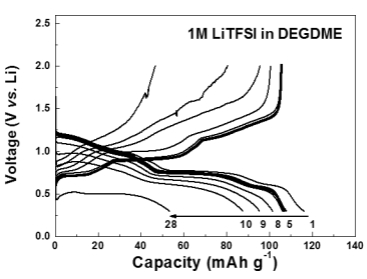
The intercalation of lithium ions into graphite electrode is the key underlying mechanism of modern lithium-ion batteries. However, co-intercalation of lithium-ions and solvent into graphite is considered undesirable because it can trigger the exfoliation of graphene layers and destroy the graphite crystal, resulting in poor cycle life. Here, it is demonstrated that the [lithium–solvent]+ intercalation does not necessarily cause exfoliation of the graphite electrode and can be remarkably reversible with appropriate solvent selection. First-principles calculations suggest that the chemical compatibility of the graphite host and [lithium–solvent]+ complex ion strongly affects the reversibility of the co-intercalation, and comparative experiments confirm this phenomenon. Moreover, it is revealed that [lithium–ether]+ co-intercalation of natural graphite electrode enables much higher power capability than normal lithium intercalation, without the risk of lithium metal plating, with retention of ≈87% of the theoretical capacity at current density of 1 A g−1. This unusual high rate capability of the co-intercalation is attributed to the (i) absence of the desolvation step, (ii) negligible formation of the solid–electrolyte interphase on graphite surface, and (iii) fast charge-transfer kinetics. This work constitutes the first step toward the utilization of fast and reversible [lithium–solvent]+ complex ion intercalation chemistry in graphite for rechargeable battery technology.
